Ski: 2021-2022 Sego Big Horn 106, 187 cm
Test Locations: Mt. Crested Butte, CO
Days Skied: 14
Available Lengths: 167, 176, 181, 187, 193 cm
Blister’s Measured Tip-to-Tail Length: 185.3 cm
Stated Weight per Ski: 2100 grams
Blister’s Measured Weight per Ski: 2145 & 2167 grams
Stated Dimensions: 136-106-130 mm
Blister’s Measured Dimensions: 135.1-105.3-129.3 mm
Stated Sidecut Radius (187 cm): 21 meters
Measured Tip & Tail Splay (ski decambered): 73 mm / 70 mm
Measured Traditional Camber Underfoot: 3 mm
Core: poplar + carbon & rubber underfoot + fiberglass laminate
Base: Durasurf 4001 base
Factory Recommended Mount Point: -4.75 cm from center; 87.9 cm from tail
Boots / Bindings: Atomic Hawx Ultra 130 S & Technica Mach1 MV 130 / Tyrolia AAAtack 13
[Note: our review was conducted on the 20/21 Big Horn 106, which was not changed for 21/22, apart from graphics.]

Intro
A few years ago, we reviewed the original Big Horn 106 — a freestyle-oriented ski that was also designed to excel in the steep, technical terrain surrounding Sego’s factory near the Tetons. We got along very well with the ski, and were particularly impressed by how well it performed for how light it was, and for how well it handled everything from firm groomers to deep snow.
Sego updated the Big Horn 106 and Big Horn 114 for the 20/21 season, in large part due to their collaboration with 2020 Freeride World Tour champ, Isaac Freeland, who spent much of the tour last year on the Big Horns. (Check out Ep. 123 of our Blister Podcast to listen to Isaac talk about his FWT season and gear.)
The goal of the updated construction was to increase stability without compromising much in the way of playfulness (especially since Sego makes the Cleaver Comp for max stability).
Luke Koppa and I have now both spent several days on the Big Horn 106, and we’re both pretty big fans of the ski. So let’s get into why the Big Horn 106 stands out in the competitive all-mountain freestyle category.
What Sego says about the Big Horn Series
Sego makes three models under the Big Horn name, and here’s how they describe the three-ski family:
“The Big Horn makes the whole mountain your playground. We designed a new layup for the Big Horn with Freeride World Tour Champion Isaac Freeland that preserves its playful nature while improving its ability to hold up to the highest speeds and largest airs on the mountain. What we’ve developed is the perfect balance between the confidence to shred anything and the playfulness to jib to your heart’s content. Available in 96, 106, and 114mm widths the Big Horn has a full poplar wood core with layers of biaxial carbon fiber wrapped in vibration dampening rubber sandwiching the core.”
All three Big Horn skis feature a poplar wood core, sintered Durasurf 4001 base, and 2.2 mm edges. However, in addition to differences in shape, the Big Horn 96 differs from the 106 and 114 mm in terms of construction.
All Big Horn models are constructed with two 19-oz fiberglass sheets that sandwich the poplar core. But the Big Horn 106 and 114 also include a 2”-wide carbon strip sandwiched between two sheets of 2” wide VDS rubber above the core, and then an additional 2” carbon strip sandwiched between two layers of full-width, ¾-length VDS rubber below the core.
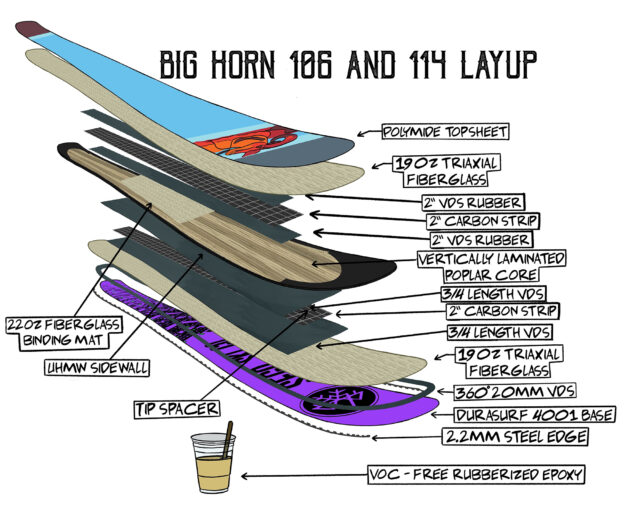
The intent with the additional layers of carbon and rubber was to make the Big Horn 106 and 114 more damp and supportive around the middle of the ski, relative to the previous versions of those skis.
All Big Horn models reportedly have the same amounts of rocker, camber, and tip & tail splay. While the Big Horns are designed to blend playfulness and stability, these skis are still designed to be less directional and more forgiving than the Cleaver series of skis, which prioritize stability and damping.
Shape / Rocker Profile
The Big Horn 106’s shape and rocker profile don’t appear to have changed when looking at the previous version of the ski. This ski’s shape still looks quite similar to some other freestyle skis that are also designed to be skied hard, such as the Whitedot Altum 104 and Moment Wildcat 108.
The Big Horn 106’s rocker profile is almost perfectly symmetrical. Like the Sego Cleaver Comp, the Big Horn 106’s tips and tails rise pretty abruptly in an almost straight line, as opposed to skis like the Altum 104 that have rockered tips and tails that stay very low / low-slung until the very ends of the ski.
Like the previous version, the Big Horn 106 still has camber through the middle of the ski, with a fairly average 3 mm measured underfoot.
Overall, the Big Horn 106’s shape and rocker profile look very similar to similarly wide skis designed with freestyle skiing in mind.
Flex Pattern
Here’s how we’d characterize the flex pattern of the Big Horn 106:
Tips: 5
Shovels: 6-7
In Front of Toe Piece: 7.5-9
Underfoot: 10
Behind the Heel Piece: 9.5-8
Tails: 6.5-5
Not a whole lot of change here, but the noticeable changes are in line with what Sego says about the new Big Horn 106.
The 20/21 Big Horn 106 feels slightly stiffer around the midsection than the older model, while the rockered portions of the two iterations feel similarly soft. Hand-flexing both iterations of the Big Horn 106, the cambered portion of the ski is clearly stiffer than the rockered portions, and while it does feel like a very quick change in stiffness when hand-flexing the ski, we have not found it to feel “hinge-point-y” on snow.
Compared to other skis in its class, the Big Horn 106 is on the stiffer end of the spectrum through the middle of the ski, while the ends of its tips and tails are on the softer end.
Sidecut Radius
The 187 cm Big Horn 106 has a stated sidecut radius of 21 meters, unchanged from 19/20. That’s a pretty normal number for all-mountain freestyle skis, and typically results in relatively easy turn initiation without the ski feeling like it wants to constantly carve across the fall line. We really liked the way the previous version of the Big Horn 106 carved, and the same is true of the new model.
Mount Point
We measured the 20/21 Big Horn 106’s mount point at -4.75 cm from true center. This is pretty standard for all-mountain freestyle skis, if slightly on the more centered side, given that several skis in this class have recommended mount points around -6 cm from true center.
Weight
Our pair of the 187 cm Sego Big Horn 106 came in at about 2156 grams per ski.
While that’s a bit heavier than the previous version, the 20/21 Big Horn 106’s weight is still pretty average for a ~106mm-wide all-mountain freestyle ski these days. There are a few notable skis that are lighter, like the Line Sir Francis Bacon, 4FRNT Devastator, Moment Wildcat 108, and Volkl Revolt 104, and then some that are heavier, like the J Skis Hotshot and Dynastar M-Free 108.
For reference, here are a number of our measured weights (per ski in grams) for some notable skis. Keep in mind the length differences to keep things apples-to-apples.
1787 & 1793 Fauna Pioneer, 184 cm (19/20–20/21)
1800 & 1824 Luke Koppa’s ROMP 100, 183 cm
1806 & 1862 Armada Tracer 108, 180 cm (19/20–20/21)
1807 & 1840 Atomic Bent Chetler 100, 188 cm (18/19–21/22)
1848 & 1903 Line Sick Day 104, 186 cm (17/18–21/22)
1875 & 1881 Line Sir Francis Bacon, 184 cm (19/20–21/22)
1883 & 1898 Rossignol BLACKOPS Sender, 178 cm (20/21–21/22)
1896 & 1942 K2 Reckoner 102, 184 cm (20/21–21/22)
1947 & 2011 4FRNT Devastator, 186 cm (20/21)
1973 & 1997 Volkl Revolt 104, 188 cm (20/21–21/22)
1976 & 2028 Parlor Cardinal Pro, 182 cm (19/20–20/21)
1985 & 2006 Parlor Cardinal 100, 185 cm (16/17–20/21)
1999 & 2020 Rossignol BLACKOPS Sender Ti, 180 cm (20/21–21/22)
2005 & 2035 Liberty Origin 106, 187 cm (19/20–20/21)
2006 & 2065 Head Kore 105, 189 cm (19/20–20/21)
2011 & 2028 Moment Wildcat 108, 184 cm (19/20–20/21)
2022 & 2046 DPS Foundation Koala 103, 184 cm (21/22)
2046 & 2120 Black Crows Corvus, 188 cm (18/19–20/21)
2049 & 2053 Whitedot Altum 104, 187 cm (19/20–20/21)
2073 & 2074 Season Nexus, 183 cm (20/21)
2079 & 2105 Kastle FX106 HP, 184 cm (19/20–20/21)
2080 & 2089 Sego Big Horn 106, 187 cm (17/18–19/20)
2096 & 2100 Salomon QST 106, 181 cm (19/20–21/22)
2097 & 2113 DPS Alchemist Wailer 106 C2, 189 cm (19/20–20/21)
2101 & 2104 Fischer Ranger 102 FR, 184 cm (18/19–21/22)
2110 & 2119 Moment Wildcat 108, 190 cm (19/20–20/21)
2113 & 2121 Moment Meridian, 187 cm (16/17–20/21)
2111 & 2125 J Skis Vacation, 186 cm (18/19–20/21)
2112 & 2125 4FRNT MSP 107, 187 cm (18/19–20/21)
2116 & 2181 Faction Dictator 3.0, 188 cm (19/20–21/22)
2120 & 2134 Blizzard Rustler 10, 188 cm (19/20–21/22)
2145 & 2167 Sego Big Horn 106, 187 cm (20/21)
2153 & 2184 Rossignol BLACKOPS Sender Ti, 187 cm (20/21–21/22)
2165 & 2211 K2 Mindbender 108Ti, 186 cm (19/20–21/22)
2165 & 2219 Icelantic Nomad 105, 191 cm (19/20–20/21)
2170 & 2180 Dynastar M-Free 108, 182 cm (20/21–21/22)
2202 & 2209 Shaggy’s Ahmeek 105, 186 cm (19/20–20/21)
2218 & 2244 Volkl Mantra 102, 184 cm (19/20–20/21)
2232 & 2242 Blizzard Cochise 106, 185 cm (20/21–21/22)
2232 & 2244 ON3P Woodsman 108, 187 cm (19/20)
2233 & 2255 Nordica Enforcer 104 Free, 186 cm (19/20–21/22)
2283 & 2290 ON3P Wrenegade 108, 189 cm (18/19–19/20)
2295 & 2344 J Skis Hotshot, 183 cm (20/21)
2312 & 2386 Prior Husume, 188 cm (17/18–20/21)
2321 & 2335 Fischer Ranger 107 Ti, 189 cm (19/20–21/22)
2325 & 2352 Folsom Blister Pro 104, 186 cm (19/20)
2326 & 2336 Nordica Enforcer 100, 186 cm (20/21–21/22)
2353 & 2360 Volkl Katana 108, 184 cm (20/21–21/22)
2449 & 2493 J Skis Hotshot, 189 cm (20/21)
2603 & 2604 Dynastar M-Pro 105, 192 cm (16/17; 20/21–21/22)
FULL REVIEW
Dylan Wood (5’11”, 155 lbs / 180 cm / 70 kg): Luke Koppa and I have now skied the updated 20/21 Sego Big Horn 106 in a wide variety of inbounds conditions, and below we’ve put our thoughts together on the ski’s general on-snow performance, how it differs from the previous version, and where exactly it slots into the all-mountain freestyle category.
Powder
Luke Koppa (5’8”, 155 lbs / 173 cm, 70 kg): In fresh snow, the 20/21 Big Horn 106 feels very similar to the previous version — surfy, poppy, and eager to get in the air.
Comparing it to other freestyle-oriented skis with lots of tip and tail rocker, the Big Horn 106 falls somewhere around the middle of the pack when it comes to flotation and maneuverability. It takes little effort from the skier to throw the Big Horn 106 sideways and score a face shot, but there are a few skis out there that feel even looser (e.g., Dynastar M-Free 108). And compared to more directional ~106mm-wide skis that have less tip or tail rocker, the Big Horn 106 definitely falls on the more maneuverable end of the spectrum in fresh snow.
Provided that I was skiing it with the somewhat neutral / centered stance that the ski encourages, I had no complaints about how well the Big Horn 106 floated in the ~10” / 25 cm of pow I got it in. This isn’t a ski that will let you really drive it hard through the front when the conditions are deep, but it doesn’t require you to be perfectly balanced, either.
As someone who typically skis pow with that sort of stance, I think I’d be perfectly content skiing the Big Horn 106 in up to around a foot of fresh snow. I suspect the Big Horn 114 would be better for deeper conditions or really mobbing through soft chop, but overall, the Big Horn 106 is a lot of fun in pow for its width.
Soft Chop
Luke Koppa: For me, soft chop and all-mountain freestyle skis go together like peanut butter and jelly. Or cold beer and fishing. Or anoraks and literally anything…
Anyway … conditions that are relatively forgiving and that create unlimited things to jump off tend to really highlight the strengths of ~105mm-wide, freestyle-oriented skis like the Big Horn 106.
But seeing as a lot of skis in this class are now fairly light and / or soft, the updated Big Horn 106 now stands out a bit more when it comes to skiing fast in soft chop. I wouldn’t call it a really damp ski compared to the whole market (which includes some skis that are far heavier), but the 20/21 Big Horn 106 definitely stays more composed than the prior generation when making big, fast, edge-of-control turns in soft conditions.
And yet, I also don’t feel like the new Big Horn 106 lost much of the quickness or lively feel of the previous version. It’s still easy to load up and launch off stuff, and doesn’t feel difficult at all when I want to throw in a quick shifty or spin.
There are certainly better alternatives for folks who want a ski that gets knocked around as little as possible in soft chop. And there are some lighter skis that feel a bit more nimble. But for my skiing style, the Big Horn 106’s combination of quickness and stability strikes a very nice balance. It lets me ski just about as fast as I want in soft conditions, yet I’d still call it a pretty quick ski that is easy to flick around whenever I want. And if you like to ski soft chop with an aggressive, yet dynamic / light-on-your-feet style, I suspect you’d really like this ski, too.
Groomers
Dylan Wood: For me, this is where the Big Horn 106 stood out the most among many other all-mountain freestyle skis around this width. The way the Big Horn 106 carves and holds an edge is surprising and impressive, particularly given how much tip and tail rocker it has. I had a blast making both medium- and large-size turns on the Big Horn 106. It held an edge on anything but scraped-off ice, and it was easy to initiate turns at basically any speed. Usually when I am skiing a freestyle-oriented ski on piste, I am usually looking for side hits to trick or patches of soft snow to slash since these skis aren’t typically that excited to carve. But the Big Horn 106 encouraged me to make the most of groomed snow, and it was a blast.
Luke Koppa: Yep, this was one area where the previous Big Horn 106 separated itself from similar skis with lots of tip and tail rocker, and the latest version is impressive on piste, too.
While I agree with most of what Dylan said, I will add a few caveats. First, the Big Horn 106 does not carve in the way that a slightly more directional ski with less rocker does (e.g., K2 Mindbender 108Ti, Nordica Enforcer 104 Free, Blizzard Cochise 106). The main difference is stance — while the Big Horn 106 will let me drive it fairly hard through the shovels, it’s not a ski that I feel like I can really bend super hard by pressuring its shovels. So while it definitely holds an edge well compared to similarly freestyle-oriented skis, I didn’t find myself laying it over as hard as more directional skis like those three I just mentioned. And probably because of this, I’d say the Big Horn 106 felt happiest on piste when making turns around GS size or bigger; I couldn’t properly carve really tight turns on it (though it’s very easy to feather and skid into smaller turns).
So I think the way I’d put it is that, if you’ve been spending time on freestyle-oriented skis around this width, you should be very happy with how the Big Horn 106 performs on piste. But if you’ve been on more directional skis with less tip or tail rocker, I don’t think you’ll be blown away by how well this ski carves.
Firm, Variable Snow
Dylan Wood: On firmer, less consistent snow, the Big Horn 106 still carves well and feels pretty stable, but doesn’t blast through crud like far-heavier skis can. The Big Horn 106 didn’t feel great to me while skiing fast in really nasty, refrozen conditions — its tips got deflected and it bucked me around when I hit unexpected hard chunks of snow.
When skiing slower and making short turns through these conditions, it felt much better and maintained the same great edge hold as I experienced on groomers. And this isn’t some big surprise — when it comes to stability in really firm, rough conditions, I’d say the Big Horn 106 is in line with some other more aggressive freestyle skis like the 187 cm Whitedot Altum 104 and 190 cm Moment Wildcat 108.
Luke Koppa: Yep, like most skis around the same weight, the 20/21 Big Horn 106 doesn’t feel ultra-smooth when the conditions are anything but that. It’s a bit better than the previous version in this regard, but much heavier skis like the J Skis Hotshot do a better job of making you forget about how crappy the snow actually is. The Big Horn 106 still felt predictable and easy to maneuver in these sorts of cruddy conditions, though, and in conditions softer than brutal, refrozen chunk, I still had a great time on this ski.
Moguls / Trees / Tight Terrain
Dylan Wood: The Big Horn 106 provides a quick, easily manageable ride in tight moguls and trees. It lets me ski with a forward or centered stance through moguls, and I find it easy to pivot around and quickly change directions. It doesn’t let me drive it as hard in really steep terrain as a far more directional ski (e.g., Blizzard Cochise 106), but the Big Horn 106 feels more supportive through the shovels than several of the freestyle-oriented options in this class.
The Big Horn 106’s tails are pretty forgiving, too — the ski didn’t punish me when I got backseat or skied with less-than-perfect technique. Along with being forgiving, the tails were also easy to release. That, combined with its flex pattern’s blend of support and forgiveness, has made the Big Horn 106 one of my favorites this year for skiing tight, steep trees.
Luke Koppa: Yep, the Big Horn 106 is pretty fun in terrain that requires lots of quick turns and frequent changes of direction. It requires minimal skier input to slash and release its tails, and it can do that from a variety of stances. Its swing weight also feels nice and light, meaning my legs don’t feel like they’ve been beaten with a stick after I spend a whole day bashing bumps on the ski.
The Big Horn 106 definitely falls on the stronger end of the spectrum for freestyle skis, but the only times when I thought its tail felt a bit stiffer than I’d have liked were in very big, tightly spaced, firm moguls. Those seeking the most forgiving, most maneuverable ski have some better options (all of which are less stable at speed than the Big Horn 106). And skiers coming from skis with very rearward mount points (-9 cm or farther back) may not love the Big Horn 106’s more centered design. But overall, I think a wide range of folks could get along quite well with this ski in bumps, steeps, and trees.
Playfulness / Freestyle
Dylan Wood: Despite gaining some weight, I still found the Sego Big Horn 106 to be a very playful ski. The ski has some serious pop to it, and is easy to get off the ground at both slow and high speeds. While it isn’t as easy to butter as a softer ski like the Line Sir Francis Bacon, the Big Horn 106’s tips and tails can definitely be bent for tail drags and nosebutters alike.
The Big Horn 106 is also very balanced and comfortable in the air — grabs, shifties, and tweaks were easy on this ski. I’ve taken many park laps on this ski and it feels great while spinning and flipping. It’s also fine for the occasional rail, provides nice stability / support for bigger jumps, and skis well switch (both landing and taking off). All of that makes it a solid choice for those who like to occasionally lap man-made jumps and rails, and a great one for those who view the whole mountain as a terrain park.
Luke Koppa: My bag of tricks is much smaller than Dylan’s, but I agree with everything he said. The Big Horn 106 is very playful overall, and apart from feeling a tiny bit heavier in the air, I don’t think it’s really lost any of the playfulness of the prior version. It’s super poppy, easy to slash around, balanced, and supportive on landings. If slow-speed butters are your thing, you have a few better options, but I think the vast majority of people will find the Big Horn 106 to feel very playful.
Mount Point
Luke Koppa: I just wanted to quickly touch on this. Dylan and I spent most of time on the Big Horn 106 with it mounted on its recommended line (about -4.7 cm from true center). There, it feels very balanced but still lets you drive it a bit through the shovels.
I also skied it mounted around -6 cm from true center, which came with the usual changes: slightly less balanced in the air and when skiing switch, but a bit more support from the shovels so that you can drive it with a slightly more forward stance. For folks who like to get in the air often, the recommended line is great. For skiers coming from slightly more directional skis, mounting back a cm or two will probably work a bit better. If you want to drive your skis very hard, that’s where I’d point you toward the more directional Sego Cleaver Comp.
Who’s It For?
Dylan Wood: I believe there is a wide range of skiers for whom the Big Horn 106 could work.
(1) Skiers who want a playful ski that is still pretty stable at speed.
There are lighter and softer skis out there that are more playful and jibby like the K2 Reckoners and Line Sir Francis Bacon, but they get deflected and knocked around much more than the Big Horn 106. And there are heavier skis that are more stable, but they aren’t as easy to spin, flip, pivot, and flick around as the Big Horn 106. The Big Horn 106 strikes a nice balance here that I believe many skiers could appreciate.
(2) Skiers who want a wide-ish freestyle ski that is still fun on firmer conditions.
Seriously, the Big Horn 106 is a blast on groomers. While many other all-mountain freestyle skis this wide do not excite on-piste, the Big Horn 106 is fun to lay over and dig some trenches on the way back to the lift when the groomers are not truly icy.
(3) Skiers looking for a playful 50/50 ski that they’ll use in the resort and backcountry.
While the Big Horn 106 did get a bit heavier, I think its weight still makes it reasonable to put a burly AT binding on it and use it for a mix of lift-accessed and human-powered skiing.
(4) Skiers who ski with a directional style but who prioritize maneuverability and quickness
Like many skis in this class, the Big Horn 106 shouldn’t be written off purely because you don’t spin, flip, or ski switch. This ski can still be driven with a pretty directional stance (particularly mounted a couple cm behind its recommended line), and compared to many of the more directional options in this class, the Big Horn 106 is easier to slash around in tight spots. But unlike some similarly nimble skis, it’s also quite comfortable making bigger, faster turns.
Bottom Line
If you asked us to describe a modern all-mountain freestyle ski, the Sego Big Horn 106 is one of the first skis that would come to mind. It has the balanced feel that makes it very comfortable getting in the air and throwing tricks, but it’s also versatile enough to ski all over the mountain in a variety of conditions. More directional skiers looking for a quick, maneuverable ride that still feels familiar and doesn’t fall apart at speed will appreciate the Big Horn 106, as will more jibby skiers looking for a bit more stability than some of the other options in this class.
The changes to the 20/21 Big Horn 106 make for a noticeable improvement in terms of stability and damping, without losing much at all in the way of playfulness. That combo, along with its generally good performance across most conditions, makes the Big Horn 106 a very compelling option as a 1-ski quiver, especially for skiers in areas that rarely see super icy conditions.
Deep Dive Comparisons
Become a Blister Member or Deep Dive subscriber to check out our Deep Dive comparisons of the Big Horn 106 to see how it compares to the Moment Wildcat 108, Whitedot Altum 104, J Skis Hotshot, Sego Cleaver Comp, Dynastar M-Free 108, K2 Reckoner 102, Black Crows Atris, Moment Deathwish, Line Sir Francis Bacon, ON3P Woodsman 108, Volkl Revolt 104, 4FRNT Devastator, Season Nexus, Fischer Ranger 102 FR, Nordica Enforcer 104, Salomon QST 106, Shaggy’s Ahmeek 105, Sego Condor 108, Elan Ripstick 106, Icelantic Nomad 105, Blizzard Rustler 10, 4FRNT MSP 107, & Liberty Origin 106.

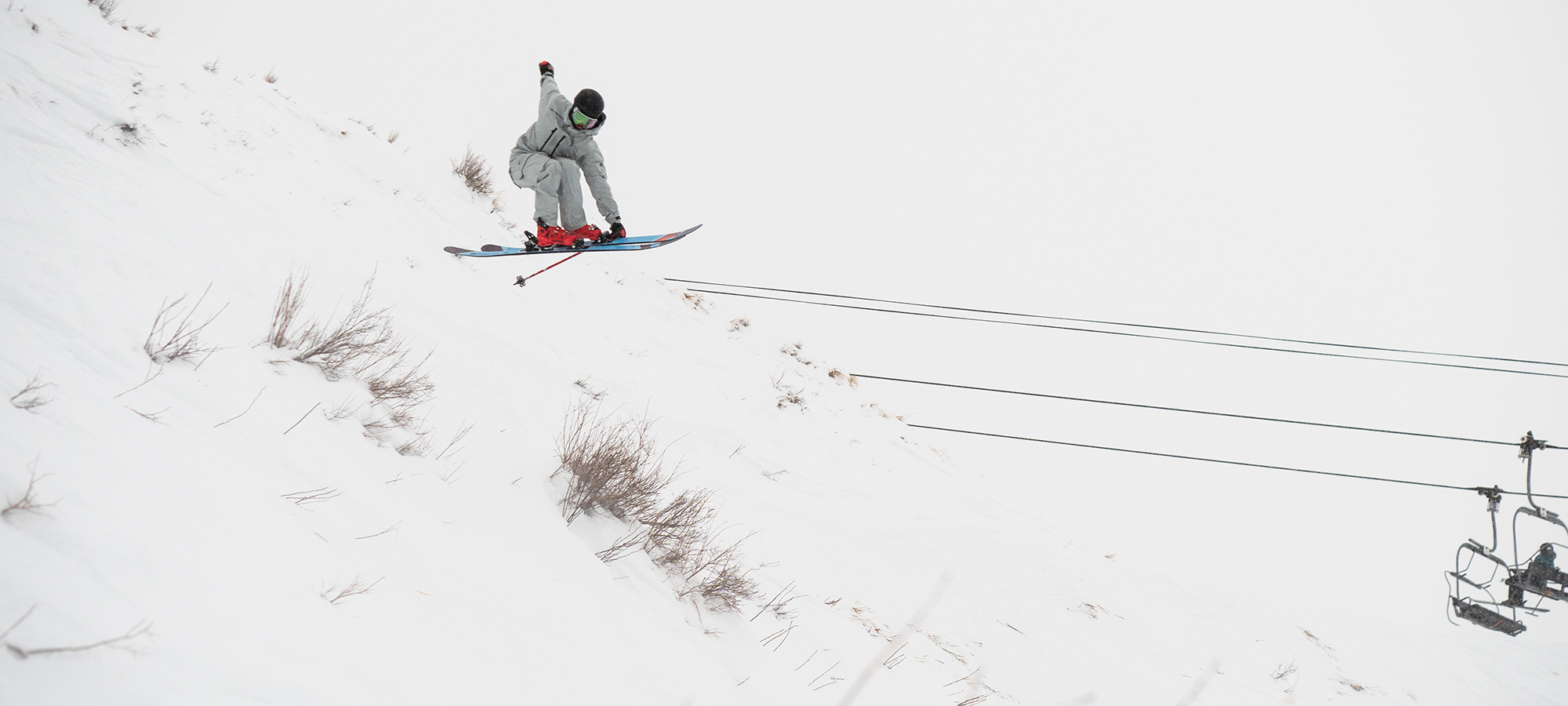


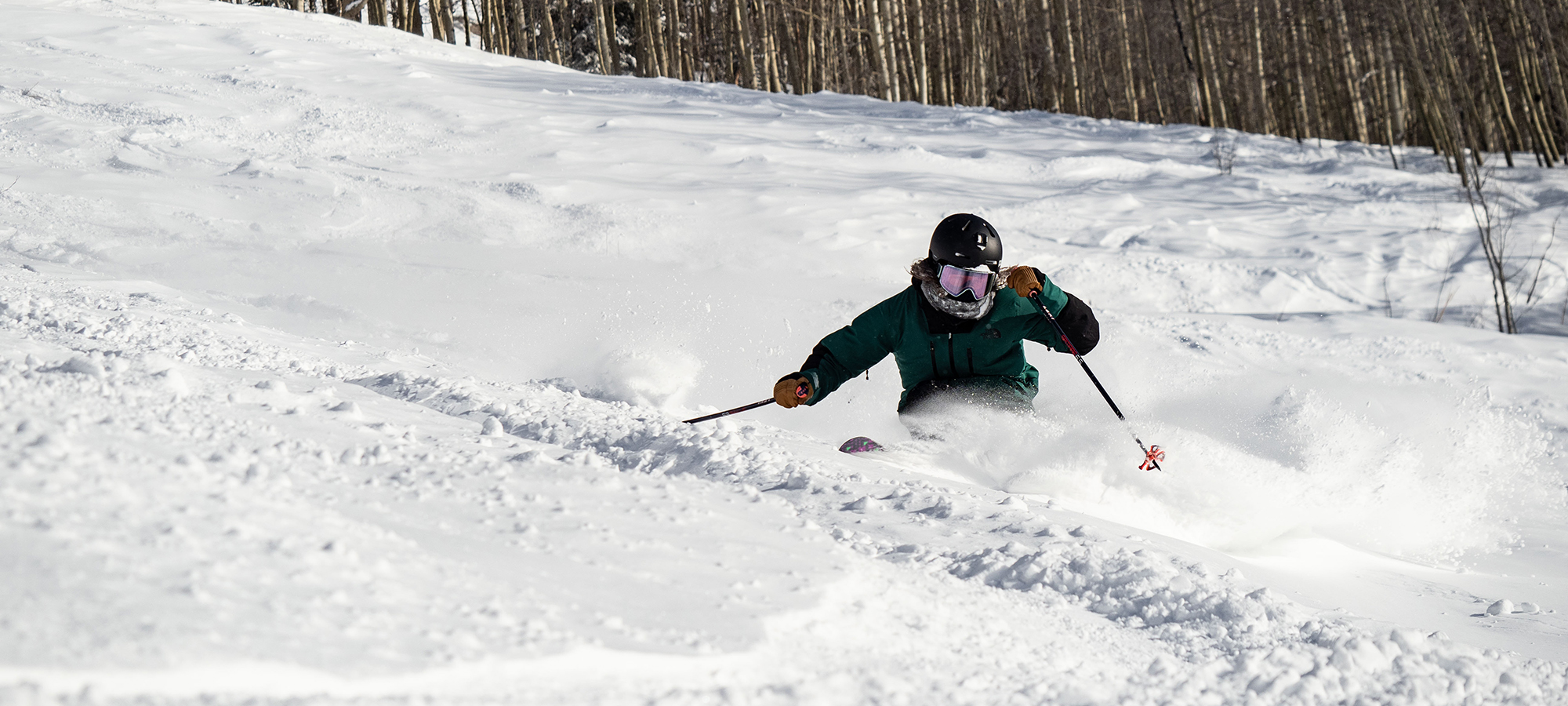
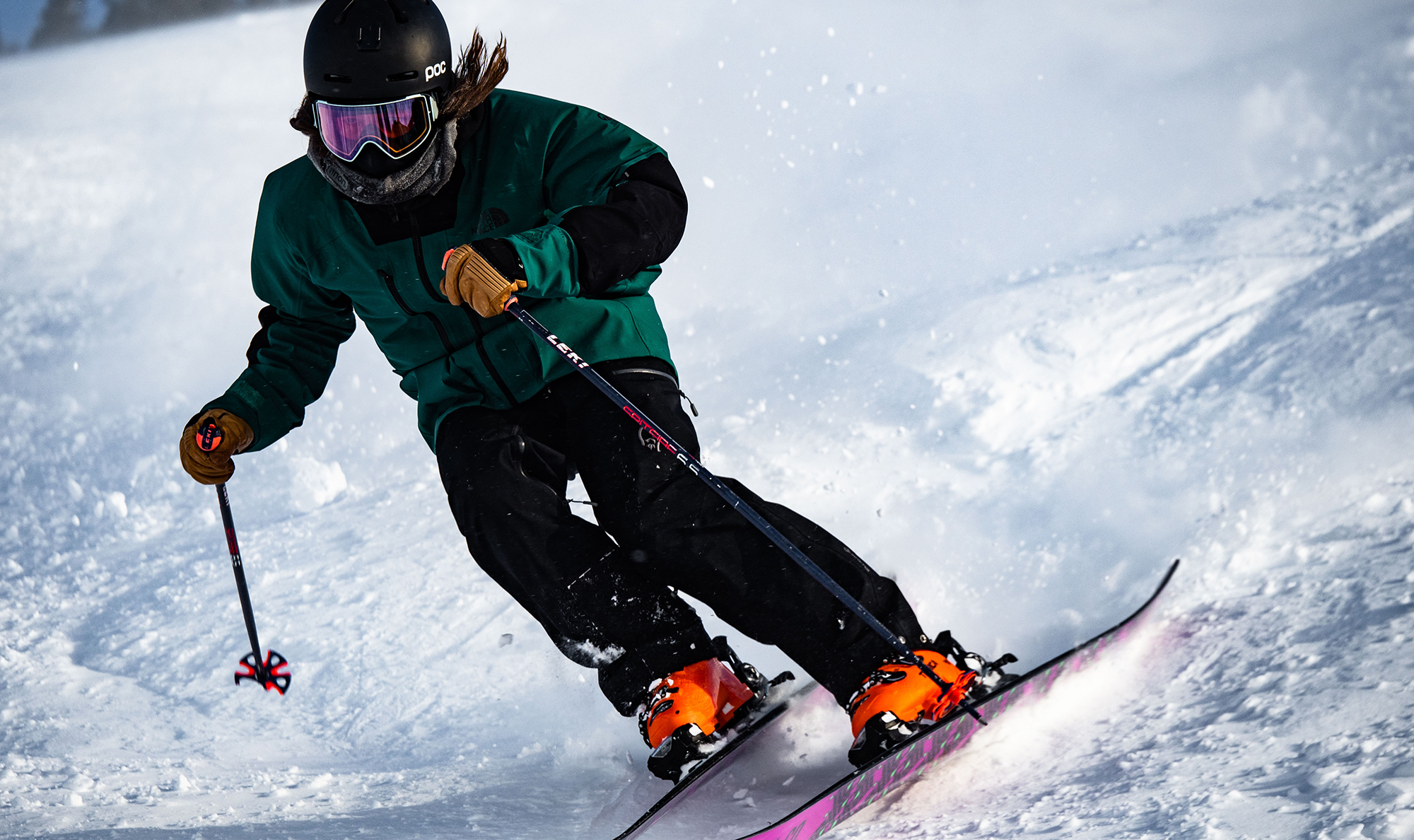
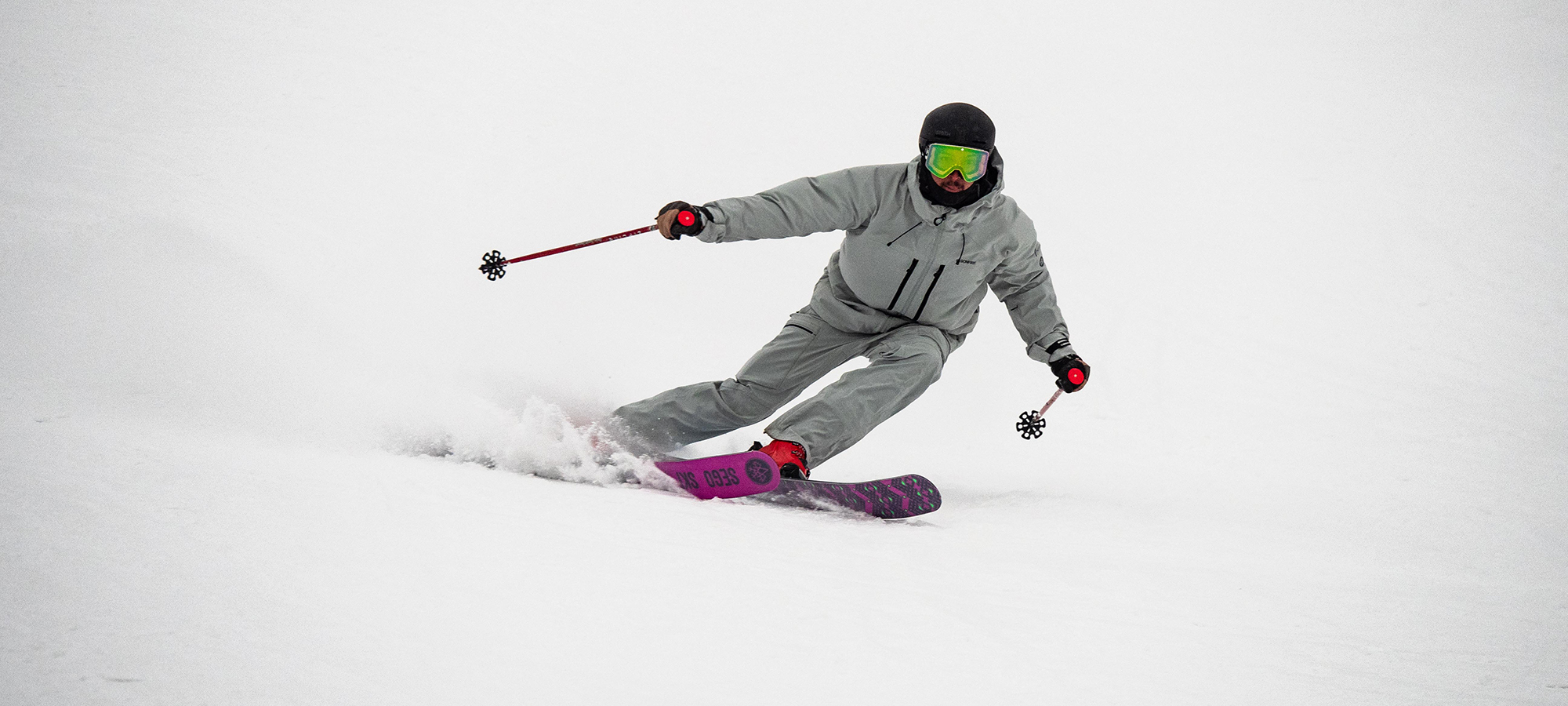
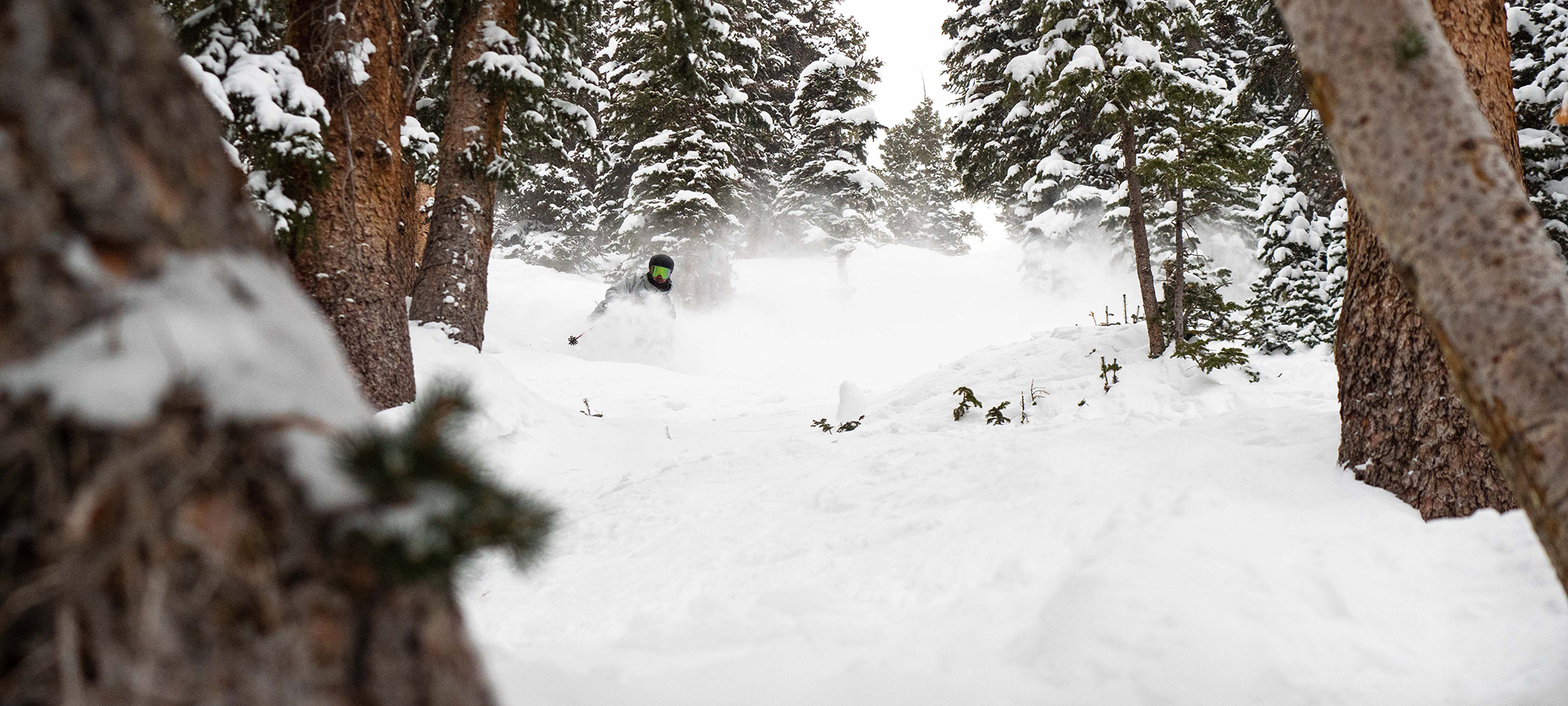
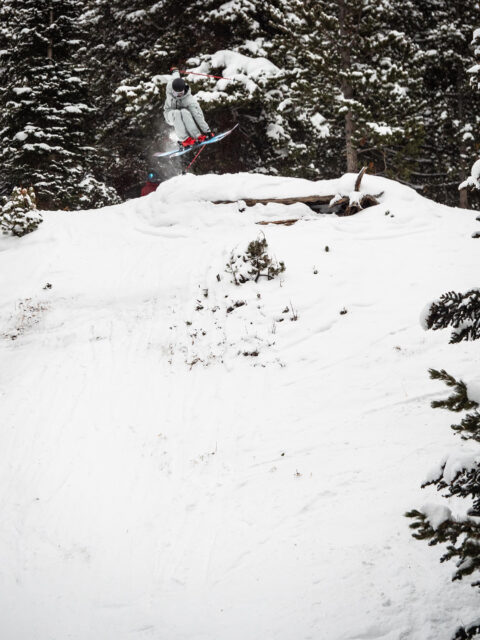
Almost zero taper in tips and tales. Interesting. That isn’t really what I think of when I think modern freestyle ski anymore?
Any thoughts on length? I’m deciding between the 187 and 193. With the more forward mount point, I was thinking a longer ski would ski better.
I think it depends on what kind of terrain you are planning on skiing. Although we haven’t skied the 193, I think it would be a fair assumption to guess that it would be more stable than the 187 as well as being more demanding in tight terrain / less maneuverable. So, if you are wanting to ski more open terrain and make big turns, the 193 should be more solid and planted. If you are going to be skiing steep/tight terrain often, the 187 is the better choice.
Thank you for the review Luke. Very intriguing ski for me but I’ve got 2 questions:
1.) For how soft you mention the tips are, it seems like you and Dylan didn’t have any issues. Do you think it will hold up just the same in heavier, denser PNW crud and chopped pow?
2.) Are the rocker lines as deep as ON3P Kartel/Jeff 108s?
TIA!
Chris,
1) I don’t expect skiing heavier, denser snow would cause you any input from the ski or characteristics of the Big Horn 106 that we didn’t experience ourselves skiing it in a wide variety of conditions. The only times I felt like the front of the ski was too soft was when laying down really hard turns carving on a groomer and hitting the frontside of a mogul with speed.
2) Yep, these two skis are pretty similar in terms of their rocker profile.
Luke/Dylan – thanks for the review. I ski a moment deathwish as my daily driver in Alta. Mostly love it for the terrain/snow here (lots of steep/tight shots and can get away with 112mm waist ski as a daily driver), but at times I’d like to be on something a bit more stable at speed in skied out conditions. The Bighorn 106 sounds like an interesting alternative that could potentially provide a bit damper ride than the Deathwish while still maintaining the playfulness that I love about the DW and a similar mount point at ~5cm from center. Curious to get your thoughts.
I am literally in the exact same situation as you – deathwish is my daily driver at Alta and I’m considering the Big Horn for the exact reasons you mentioned. Commenting in the hope that someones sees this and responds!
Jake and David,
The Big Horn 106 is a good narrower, more stable alternative to the Deathwish. While the Deathwish floats better, the Big Horn 106 stays a bit more composed in chop and crud. The Deathwish has a bit better edge hold in firm snow, but the Big Horn can be bent into tighter carved turned on groomers. They’re similarly playful and maneuverable in tight spots, which sounds like priorities for you two.
I hope this helps.
Thanks Dylan! I think I’ll have to give this ski a try then.
With Sego seemingly out of the picture, I’m casting around for a replacment for my well-loved Big Horns. Wondering about the J Skis Vacation which has generally similar specs though it’s not quite as symmetrical. Any thoughts on this or other alternatives if (as seems likely) another pair of Sego skis is not in the cards any time soon?
Hey TLS. The closest current skis out there to the Big Horn 106 would be the Moment Wildcat 108, Whitedot Altum 104, and Line Blade Optic 104. The Vacation is notably more soft and playful than the Big Horn.
Feel free to send an email through the personalized gear recommendations portal in the Blister Member Clubhouse if you need more help.
My Big Horn 187cm broke :( Luke recommended me it a few years ago and it was incredible. RIP.
I tried the Wildcat 108 in 184, and I don’t like it. Less suspension, feel it gets knocked around easier, carves worse, twitchier, harsher in firm conditions.
Looking at specs, the Line Blade Optic might have the weight and flex characteristics to feel most like my Big Horn did?
Any info on what happened to Sego?